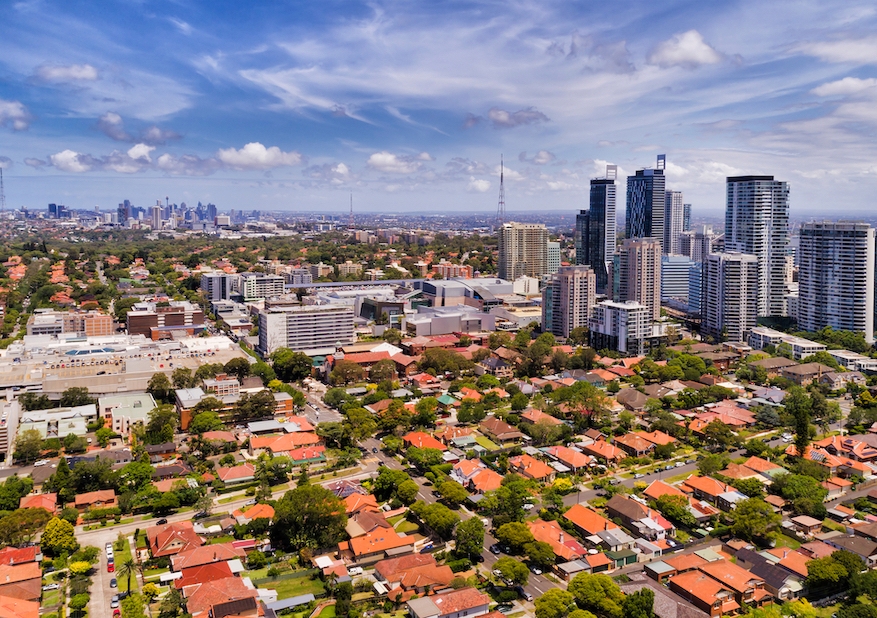Living locally and the rise of the 20-minute neighbourhood
The ability to work, live and play all within 20 minutes' reach is the new gold standard for urban planning.
The ability to work, live and play all within 20 minutes' reach is the new gold standard for urban planning.

Imagine being able to carry out your daily activities within a 20-minute walk from home. All the things you need in a day would be just a short walk away. In planning circles, it’s a concept known as the 20-minute neighbourhood, and it could be on the cards for your area sooner than you think.
The rise of the 20-minute neighbourhood has come from people’s desire to return to living locally and planners’ recognition that these neighbourhoods offer high levels of liveability, says UNSW Built Environment Professor Linda Corkery.
“The goal of the 20-minute neighbourhood is to make available the essentials of day-to-day life within a convenient walk from home,” she says. “This means having shops and services, schools, public transport, and employment within a 20-minute walk.
“So considering a typical day, I might need to get my kids to school, collect a script at the chemist, meet a friend for coffee, pick up groceries, and ideally that could all be done on foot.
“The 20-minute distance stems from what is considered an average walking time for a healthy adult to cover roughly 800m,” she says, “taking into account the general ‘walkability’ of the area.”
Professor Corkery says the 20-minute neighbourhood offers a range of benefits beyond convenience.
“Residents of these neighbourhoods often have a strong sense of community and connection to place,” she says. “People are out and about on the street socialising, supporting local businesses, being involved with local schools, enjoying local parks. It helps all those kinds of things.”
One of the fundamental principles underpinning the idea is to promote walkable neighbourhoods that will get people moving and can, in turn, deliver healthier lifestyles and improved public health, generally.
“There are also environmental benefits to be gained if people aren’t jumping in their cars all the time to do local errands.”
Professor Corkery says living under COVID-19 restrictions for the past several months has emphasised the benefits of the 20-minute neighbourhood.
“It’s come sharply into focus because we’ve had to stay at home and only go outside for ‘essential’ activities’” she says. “People are re-discovering their local areas, and we’re seeing increased use of local parks and streets for daily exercise.
“And, we’re taking more notice of the amenity, or lack of, in local neighbourhood environments. In some places we can see the need to have better street design, improved footpaths, street trees, and connections to local green spaces,” she says.
“We’re also realising that we may not need to travel into [work] every day,” she says. “We’re learning how to engage students with their learning when we’re all operating from different locations. In fact, we’re saving a lot of time by not commuting and valuing more the benefits of our local communities.”
Professor Corkery says 20-minute neighbourhoods won’t happen overnight. Planning for them involves detailed analysis of existing facilities, businesses and services, local open spaces and activity patterns.
“Residents need to communicate their fine-grain knowledge and appreciation of local neighbourhood features to their local council to assist this planning.”
“As landscape architects, we focus on the quality of the public realm, for example, to make sure there are safe and accessible footpaths that connect you to attractive and comfortable public spaces,” she says. “Beyond the neighbourhood, those connections can get you to a bus stop or train station that connects you to your employment.”
In Australia, the City of Melbourne has led the charge for using the 20-minute concept to shape their future city around a series of such neighbourhoods. Professor Corkery notes that in Sydney, many of the older, close-in suburbs are already 20-minute neighbourhoods which makes them popular locations.
“Of course, popularity boosts property values and then living locally becomes unaffordable,” she says. “We need to make that housing options available that will make it possible for families and young professionals to live in these neighbourhoods – and at the other end of the spectrum enable older people to age in place.”
Ultimately, achieving a 20-minute neighbourhood will require the integrated efforts of many disciplines but has the potential to deliver vital, productive, and sustainable urban communities, she adds.